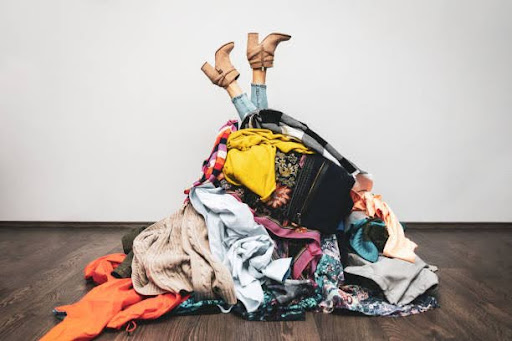What is your favorite thing to do in your free time? Is it scrolling through your social media, shopping at the mall, or using apps like Amazon, Shein, or Temu? If so, it may be time to put your phone down and focus on the homework you have been putting off.
Like most people, you spend considerable time on your phone, scrolling through the latest trends or new gadgets on apps like TikTok and Instagram. Whether you’re watching an unboxing video or your favorite influencer’s “get ready with me,” it’s hard to escape the endless pressure of buying into trends and spending money you may not have. Some who face this mounting pressure may experience an addiction to shopping.
You may think that a shopping addiction is completely harmless or merely poor financial management or that it is not a “real” addiction, but in truth, this addiction can be just as damaging as gambling or alcoholism. This addiction causes people to be unable to stop compulsive shopping and leads them into financial problems due to overspending. People with this addiction use shopping as a way to seek a temporary high, which often results in feelings of regret, guilt, or shame. Often, the strongest urges to impulsively shop occur when people are sad, depressed, or angry. This addiction impacts 4.9% of the global adult population and is more prevalent in women than in men. The addiction usually begins to manifest in people who are in their late teens and early twenties. Many people who suffer from this addiction usually have a coexisting mental health condition.
Often making this addiction worse is that our country runs on shopaholics. Spending money on everyday goods or indulging in large purchases benefits the economy, keeping it out of a recession. Consumerism makes up 70% of the U.S. economy, making it the key to continuous economic growth. The presence of social media also plays a significant part. According to a survey, 69% of people who admitted to having a shopping addiction said that social media fueled their bad habits. Social media provides easier access to comparing your life with others and pressures people to live lavish and expensive lifestyles, which many can not afford.
Shopping addictions and retail therapy are also heavily glamorized in the media, which prevents many people from seeing the true problem that it is. The pandemic has also impacted people’s shopping behavior, causing stress from COVID-19 to be taken out through online shopping sprees. According to a survey conducted by Qualtrics for Intuit Credit Karma, 33% of Gen Z and Millennials have a shopping addiction, and 30% of those say they developed the addiction during the pandemic. Other factors may go unnoticed. For instance, many businesses use marketing tactics that exploit consumers through their psychological vulnerabilities. These tactics can include the bandwagon approach, emotional appeal, product scarcity, color psychology, or influencer marketing. These strategies often make people with or without shopping addictions more likely to make impulse purchases and spend money they probably don’t have.
But before you get scared, there are many ways to combat a shopping addiction and even impulsive buying. For many, admitting to the problem can be the first and hardest step, but once it’s achieved, there are many things you can do to manage the addiction.
Steps you can take to help manage the addiction:
- Talk with family or friends about what you’re experiencing and ask for support when needed.
- Go to a licensed professional where you can work through the emotional and psychological aspects of the addiction.
- Write a shopping list and STICK TO IT!
- Take a break from social media and delete shopping apps like Temu or Amazon.
- Make it harder for you to spend your money. For example, shut off your debit/credit card or don’t take your card or cash with you where you know you might be tempted to spend money.
- Set a budget to manage and control spending.
- Find alternative ways to find joy and fulfillment in your life, like exercise or a new hobby.


